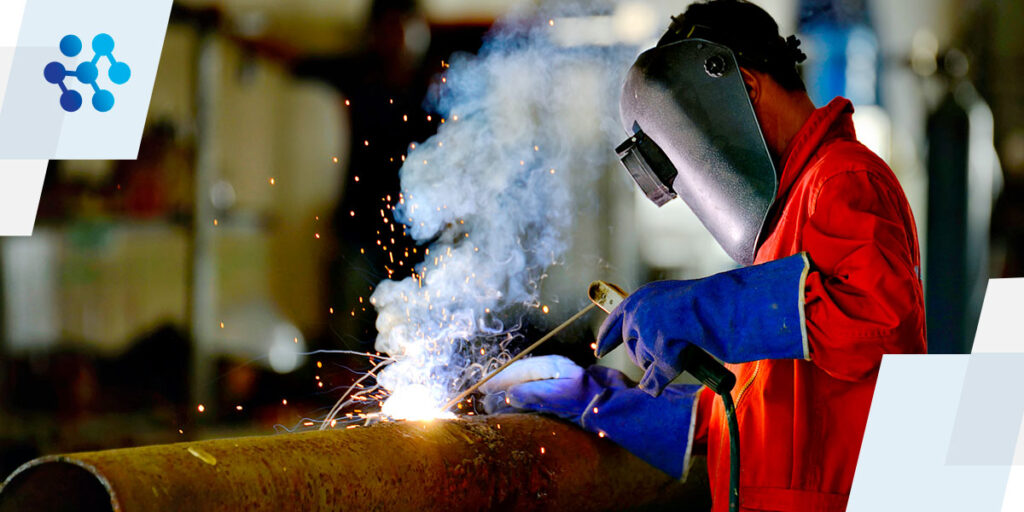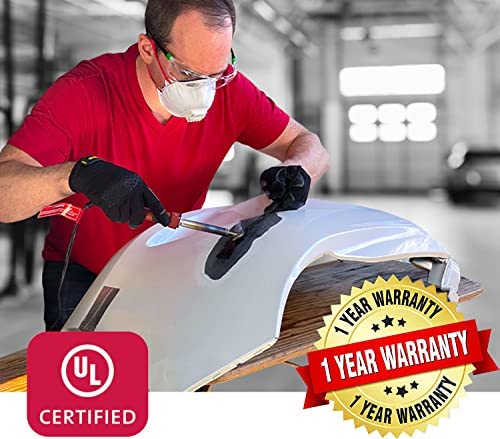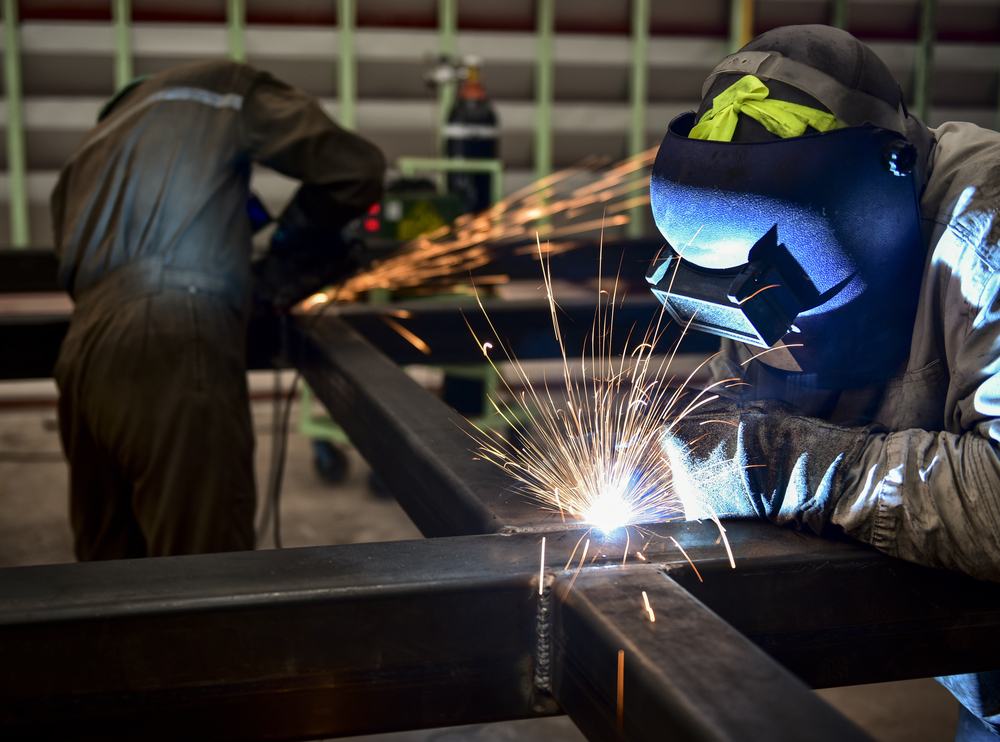Common Welding Repair Service Issues and Just How to Address Them Efficiently
Welding repairs frequently come across a variety of concerns that can jeopardize the stability of the end product. Common troubles consist of inadequate penetration, porosity, and imbalance, to name a few. Each problem provides distinct difficulties that require details approaches for resolution. Understanding these issues is important for welders intending to improve their skills and outcomes. This conversation will certainly discover these usual welding repair issues and efficient approaches to resolve them.
Inadequate Infiltration
Inadequate infiltration occurs when the weld steel falls short to fully fuse with the base material, causing weak joints and prospective architectural failures. This issue often originates from not enough heat input, wrong electrode angle, or improper welding rate. Welders may come across insufficient infiltration as a result of a mistake of the required parameters for a details material thickness or kind. Furthermore, contamination on the base material's surface can prevent effective bonding, intensifying the trouble. To attend to poor infiltration, welders must assure ideal setups on their tools and maintain a clean work surface area. Routine evaluation of welds is advised to identify any kind of deficiencies early, permitting prompt improvements and the avoidance of jeopardized structural honesty in welded assemblies.
Porosity
Porosity is a common flaw in bonded joints that materializes as little gas bubbles trapped within the weld metal. This problem can compromise the honesty of the weld, causing lowered toughness and prospective failing under tension. Welding. Porosity typically emerges from contamination, moisture, or improper welding strategies, which enable gases to escape right into the liquified weld swimming pool. To attend to porosity, welders must guarantee correct surface preparation, maintain a tidy workplace, and utilize appropriate welding criteria. Furthermore, picking the ideal filler material and securing gas can alleviate gas entrapment. Normal examination and screening of welds can aid determine porosity early, guaranteeing prompt rehabilitative actions are taken, therefore preserving the high quality and integrity of the welded framework
Misalignment
Misalignment in welding can develop from numerous elements, including incorrect configuration and thermal development. Recognizing the origin triggers is necessary for efficient resolution. A number of improvement methods are offered to straighten components and ensure architectural honesty.
Sources of Misalignment
Welding misalignment commonly comes from a range of underlying problems that can jeopardize architectural stability. One primary reason is improper fit-up of parts prior to welding, which can bring about gaps and irregular surfaces. Variants in thermal growth during the welding procedure can also lead to distortion, specifically if the products being signed up with have different coefficients of growth. Furthermore, poor clamping and fixturing might fail to hold elements securely in position, resulting in movement during welding. Badly kept equipment, consisting of welding equipments and tools, might introduce variances in the weld grain, further adding to misalignment. Driver mistake, stemming from inadequate training or experience, can additionally play a considerable role in producing misaligned welds.

Modification Techniques Readily Available
Dealing with imbalance properly needs a mix of corrective methods customized to the specific issues at hand. One common technique is using components or jigs to hold components in the proper placement during welding, making sure regular positioning. Furthermore, preheating the materials can help in reducing distortion and enhance fit-up. For considerable imbalance, mechanical adjustment methods, such as making use of hydraulic jacks or clamps, can be utilized to fix the position before welding. Post-weld heat treatment may likewise be essential to relieve anxieties triggered by imbalance. Mindful evaluation and adjustment throughout the arrangement stage can prevent imbalance issues from becoming substantial problems, advertising a smoother welding procedure and improving general structural integrity.
Distortion
Distortion is a common obstacle in welding that can emerge from various aspects, including uneven cooling and heating. Recognizing the causes of distortion is crucial for carrying out reliable prevention strategies. Addressing this problem not only enhances architectural honesty yet additionally improves the general quality of the weld.
Root causes of Distortion
When based on the intense heat of welding, products typically undergo adjustments that can lead to distortion. This phenomenon primarily arises from thermal development and contraction throughout the welding procedure. As the weld location warms up, the material increases; upon cooling, it contracts, which can develop interior anxieties. On top of that, irregular heating throughout a workpiece can worsen these anxieties, resulting in warping or bending. The kind of product likewise plays a substantial function; steels with differing thermal conductivity and coefficients of development might respond in a different way, leading to uncertain distortions. Inadequate joint design and insufficient fixturing can contribute to imbalance throughout welding, boosting the possibility of distortion. Understanding these reasons is necessary for effective welding fixing and avoidance methods.
Prevention Techniques
Reliable avoidance techniques for distortion throughout welding emphasis on regulating heat input and guaranteeing correct joint design. Preserving a regular warmth input helps to lessen thermal development and contraction, which can lead to distortion. Making use of techniques such as preheating the workpiece can also lower the temperature slope, advertising uniform heating. In addition, picking appropriate joint styles, such as T-joints or lap joints, can boost security and reduce tension focus. Executing correct fixturing to secure the workpieces in location additionally aids in preserving alignment during the welding procedure. Lastly, staggered welding sequences can distribute warm extra evenly, avoiding local distortion. By applying these methods, welders can substantially reduce the probability of distortion and boost the total top quality of their welds.
Cracking
Splitting is an usual concern run into in welding fixings, typically arising from different variables such as improper cooling prices, product option, or inadequate joint prep work. The incident of fractures can substantially jeopardize the honesty of the weld, causing possible failures during operation. To resolve this concern, welders must first evaluate the origin triggers, guaranteeing that materials are suitable and appropriately chosen for the details application. In addition, controlling the cooling rate during the welding process is essential; quick cooling can cause tension and bring about cracking. Correct joint layout and preparation likewise add to decreasing the danger. Executing these techniques can improve weld high quality and longevity, ultimately lowering the likelihood of breaking in completed weldments.

Incomplete Combination
A significant issue in welding fixings is insufficient blend, which occurs when the weld steel does not properly bond with the base product or previous weld passes - Belgrade Fabrication. This defect can result in weaknesses in the joint, possibly jeopardizing the stability of the welded structure. Elements adding to incomplete blend consist of not enough warmth input, inappropriate welding strategy, and contamination of the surface areas being joined. To resolve this concern effectively, welders must assure proper pre-weld cleaning and surface area preparation, as well as readjust their welding specifications to attain adequate penetration and fusion. Routine evaluation throughout the welding process can likewise help determine incomplete blend early, permitting prompt rehabilitative actions to improve the general quality of the weld
Overheating
While welding fixings can boost structural honesty, overheating presents a significant obstacle that can bring about product deterioration. Excessive heat during welding can alter the mechanical properties of metals, continue reading this resulting in decreased stamina, increased brittleness, and bending. This phenomenon is specifically vital in high-stress applications where architectural reliability is paramount. Identifying overheating can include aesthetic evaluations for staining or distortion, as well as keeping track of temperature during the welding procedure. To click this minimize the dangers connected with getting too hot, welders must use appropriate methods, such as controlling warm input, changing traveling rate, and making use of appropriate filler products. Furthermore, executing pre- and post-weld warm treatments can help bring back product residential or commercial properties and enhance the total quality of the repair, guaranteeing long-term efficiency and safety and security.
Often Asked Questions
What Are the Usual Indicators of a Welding Problem?

Just How Can I Evaluate My Welds for Top quality?
To evaluate welds for quality, one can make use of aesthetic examinations, ultrasonic screening, and radiographic techniques. Each method assures structural honesty, determines flaws, and validates adherence to defined standards, inevitably enhancing the reliability of the welded joints.
What Security Precautions Should I Take While Welding?
When welding, one need to focus on safety by using appropriate individual protective equipment, ensuring appropriate air flow, securing flammable materials away, preserving a tidy workspace, and knowing environments to avoid injuries and mishaps.
Can I Fix a Weld Without Renovating the Entire Joint?
Repairing a weld without redoing the entire joint is possible, depending upon the damage (Montana Mobile Welding and Repair). Methods such as grinding, including filler material, or using a welding procedure can efficiently resolve details flaws while protecting the bordering structure
What Devices Are Vital for Reliable Welding Repairs?
Necessary devices for reliable welding repairs include a welding device, cable brush, grinder, protective gear, clamps, and filler products. Each tool plays an important role in guaranteeing quality and safety during the fixing procedure. Porosity commonly arises from contamination, dampness, or inappropriate welding official website techniques, which enable gases to leave right into the liquified weld pool. Inadequately kept devices, consisting of welding devices and devices, might present incongruities in the weld bead, more adding to misalignment. When subjected to the extreme warm of welding, materials frequently go through modifications that can lead to distortion. Breaking is a common issue experienced in welding repair work, typically resulting from numerous elements such as inappropriate air conditioning prices, product option, or inadequate joint prep work. A considerable problem in welding repair work is incomplete combination, which happens when the weld steel does not effectively bond with the base product or previous weld passes.